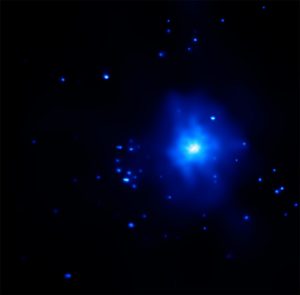Galaxy Zoo is commemorated on 11th July. This citizen science project, part of the Zooinverse, has meant large numbers of fans have pooled all the information they know in order to classify large numbers of galaxies. Galaxies – those gravitational systems of stars, interstellar gas, dust and other things – have some magnificent and mind-bending wonders that may be hard to believe, but which are actually true.
Chirality of Spiral Galaxies
One of the memorable issues that resulted from Galaxy Zoo was not astronomical, amazingly. It was more psychological. Many viewers and researchers are concerned whether spiral galaxy arms revolve clockwise or anti-clockwise. It becomes even more amazing when one tries to understand whether the arms are distributed evenly or whether there is some inherent property that belongs to the universe causing galaxies to rotate in one given way or another. Upon committing the results to an analysis of renowned scientists, the revolutions seemed to rotate in anti-clockwise directions. Upon further analysis, which involved further input, it was again confirmed that spirals rotated in an anti-clockwise direction. This is not therefore an astronomical sensation. It turns out the human mind has a clear difficulty in deciding whether a certain rotational direction is clockwise or anti-clockwise. Upon close analysis of the spirals, it was agreed that they rotated in the same direction.
Blue Elliptical

The blue ellipticals are a real enigma that started the ever-interesting and intriguing Galaxy Zoo. In general, galaxies are divided into two – rugby-ball shaped elliptical galaxies that no longer produce more stars and which are elliptical, and spiral galaxies such as our own Milky Way that has the blue light of youthful stars. It is clear that once galaxies do not make new stars any longer, they change their shape from spiral to elliptical. Wait. How does this occur? What action precedes the other? If a researcher is able to answer that question, then he/she is on his/her way to comprehending the physics behind transformational galaxies. Galaxy Zoo has numerous blue ellipticals whose shapes have been altered though they still have stars.
Through such blue ellipticals, a lot of progress has been made in the evolution of the galaxy. This is almost synonymous to a galaxy merger or a gigantic collision of heavenly bodies which eventually alters the shape of the galaxies to an elliptical shape from a spiral one. After this, the formation of stars suddenly stops. It is known what causes the sudden stop but it is thought that black holes could have a part to play in that. This is very relevant to our galaxy. Scientists have issued predictions that the Milky Way will eventually crash into the Andromeda Galaxy after a few more billion years. After the crash, the Andromeda and the Milky Way will assume an elliptical shape, a state that will remain for eternity.
Red Spirals

Everyone thought that spirals are blue and ellipticals are red. It wasn’t until the creation of Galaxy Zoo that people began to think differently. Think of a typical galaxy that is spiral-shaped and see if the blue color will leave your mind. Astronomers, strangely, think the same too. If you came with an argument of a red spiral before Edwin Hubble, he could have pushed you off and stated that you have a ridiculous argument. Before the occurrence of Galaxy Zoo, anything that looked red was concluded to be elliptical without the blinking of an eye. However, if one is not trained on color and galaxy bodies, it is possible to hear arguments of red-colored spirals and blue ellipticals. The presence of red spiral means that there is a new path of heavenly bodies, and it is important to state that the Galaxy Bodies do not change their shapes.
Green Peas
Citizen Scientists are the ones who are credited with the discovery of Green Peas. Peas are compact bodies which do not have such huge mass and can only be observed with powerful telescopes. Green Peas have bright green colors and they are small in size (it’s a very original name!) ?The scientists made use of their research prowess, and even though the peas were hiding within the data, the scientists worked tirelessly to observe the objects and they concluded that Green Peas were worth being researched. If you want to observe them in greater detail, visit the astronomy laboratory and you will have a chance of viewing them with much more ease.

